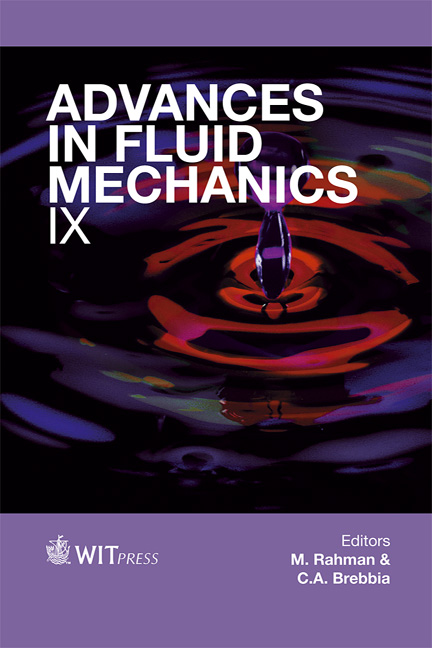Air–water: Two Phase Flow Behavior In A Horizontal Pipe Using Computational Fluids Dynamics (CFD)
Price
Free (open access)
Transaction
Volume
74
Pages
12
Page Range
381 - 392
Published
2012
Size
684 kb
Paper DOI
10.2495/AFM120341
Copyright
WIT Press
Author(s)
F. Vásquez, M. Stanko, A. Vásquez, J. De Andrade & M. Asuaje
Abstract
Two-phase flow is an area of primary interest, particularly for the petroleum industry, where a fair amount of these kinds of flows can be found in the production of oil wells. This study refers to the evaluation of two-phase flow air– water through a horizontal pipe of 0.0508m (2in) diameter and 1.016m (40in) length. A 3D CFD approach was used for reproducing the behavior of the dispersed bubble, stratified smooth and slug flow in a horizontal pipe. The pressure drop and liquid holdup associated with it were estimated. Data of the superficial velocities of the liquid and gas were taken from the literature; and then many CFD simulations were carried out using different multiphase flow models. The results were validated with the available experimental data from the literature. For the case in which the liquid is the continuous phase and the gas behaves as the dispersed one, the results show that the bubble disperse flow behaves homogeneously. In these simulations, for a 0.01mm gas bubble diameter the pressure drop presented a deviation of 6.12% over that reported in the literature. For the liquid holdup value a difference of 0.001% was obtained. An inhomogeneous approach with the free surface model reproduced satisfactorily the stratified smooth behavior. In addition, the influences of increasing water superficial velocity on the energy losses and the liquid holdup were obtained. However, for the studied numerical domain, the slug flow pattern could not be reproduced. All these results above allowed us to establish the great applicability of CFD modeling in the problem resolution of two-phase flow in a horizontal pipe. Keywords: two-phase flow, CFD, flow patterns, liquid holdup, pressure drop.
Keywords
two-phase flow, CFD, flow patterns, liquid holdup, pressure drop.





